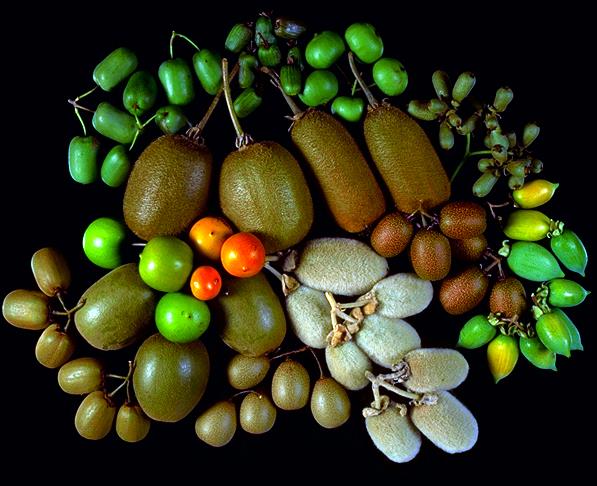Grant Jacobs has climbed in on the non-meat addition to Air New Zealand’s inflight menu, observing that in the New Zealand media and social media people are talking about this genetically modified ‘Impossible Burger’.
Except it’s not.
Sorry everyone, but it really isn’t genetically modified.
What was genetic engineered is a yeast that makes one the of the ingredients used in the ‘Impossible Burger’.
It’s just a different way of making that ingredient. The ingredient is the same as in soy plants. The burgers you can find in ‘natural’ plants.
A key part of what gives the burger it’s meaty taste is a “blood” protein, leghaemoglobin, Jacobs points out (Souxsie Wiles made the same point when describing the processes involved in cooking up the mock meat).
Jacobs goes on:
“The one used is actually from soy plants, not animals. Like the similarly-named haemoglobin in our blood, it’s a protein that tightly binds an iron atom to carry the oxygen around. Haemoglobins are a part of blood, and make the patty taste like we’d expect meat to.
(Plants don’t have blood, but evolution re-uses similar proteins in other forms of life, re-using the detailed molecular job they do—in this case, carting oxygen about. They’re structurally very similar, and, apparently smell and taste similar, too.)
The yeast have been made to biosynthetise the protein by adding a gene for the leghaemoglobin to them. The leghaemoglobin protein made by the yeast is identical to what is found in soy plants.
You could try to extract it from soy plants. Or you could get yeast to make the protein you’re wanting directly, more efficiently. In both cases, the protein is the exact same. The burger isn’t any different.
It’s not the burger that has been genetically modified, or anything in it: it’s the yeast that makes one of the ingredients.
This is basically the same as the way insulin is made, Jacobs says.
Diabetics take insulin to control the levels of sugar in their blood. Insulin was once made by extracting it from pancreases of cattle or pigs. Forty years ago scientists first made insulin from bacteria with a gene for insulin grafted into them. Since then biosynthesis using either bacteria or yeast has been commercialised, and is used worldwide by countless people.
Making medicines, vitamins, supplements, and other products are valuable applications of genetic engineering. Well-established examples include insulin, human growth hormone, vaccines, supplements (e.g. tryptophan), rennin (used in cheese making) and biofuels. There are many, many other examples under development.
There are wider-still applications, some of which have great potential – modified biomolecules as nano-engineering scaffolds, biomining (extracting minerals) and mopping up or breaking down waste, for example.
It’s not just bacteria or yeast. We can biosynthesise things using plants and animals, too. There’s research to develop plants that make medicines, or supplements. There is modified milk to reduce allergies, to give an example related to New Zealand.
But people opposing genetic engineering raise concerns about things they say might happen one day to justify their demands we ban all use of genetic engineering in-the-field at a stroke.
There is a very wide range of applications for genetic engineering. Just within plants, there’s resistance to disease, drought, frost, making supplements (vitamin A, calcium), onions that don’t make you cry (developed in NZ), preventing browning in fruits, and a whole raft of others.
A key thing is that they’re all very different! You can’t really talk about them in a general, sweeping way.
Any ‘possible’ risks are with the new plant or animal variety, not the techniques used to make the variety and that particular application. (GMOs are not completely ‘new organisms’, but are new varieties of existing organisms; they’re almost entirely the same as the ‘parent’ organism with one or two of the tens of thousands of genes in them altered, added, or removed.)
If anything, calls for blanket bans are getting distracted away from risks. They’re ideological objections when you strip away the science facade often placed on the objections.
Rather than throw all the good applications out for the sake of hypothetical worries, why not consider what applications are acceptable?
It’s not helped by a few irresponsible groups (that seem to like attention) encouraging ‘banning’ all of them, throwing out the many good applications. Ironically, they often end up at odds with their own aims of a more environmentally-friendly world. (Greenpeace, for example.)
Late last year Jacobs wrote a brief list of points about genetically-modified plants, as starters for discussion.
Now he notes that:
Impossible Foods is not the only company making meat substitutes. Another is Beyond Meat. They’re unlikely to be the only or last. It’s a market NZ could contribute to and benefit from if we weren’t hampered by unnecessarily restrictive GM laws.
Similarly, we could be getting on making and using with the many beneficial GM crops and animals if we could throw off this distracting focus on ‘what if’, ‘maybe one day’ concerns and look at each application. They’re all different. It’s a crying shame to be throwing all these good applications for no sound reason.
Jacobs agrees with Siouxsie Wiles that it’s time for a kōrero. It’s time to move forward, as he has been calling for for a while.












